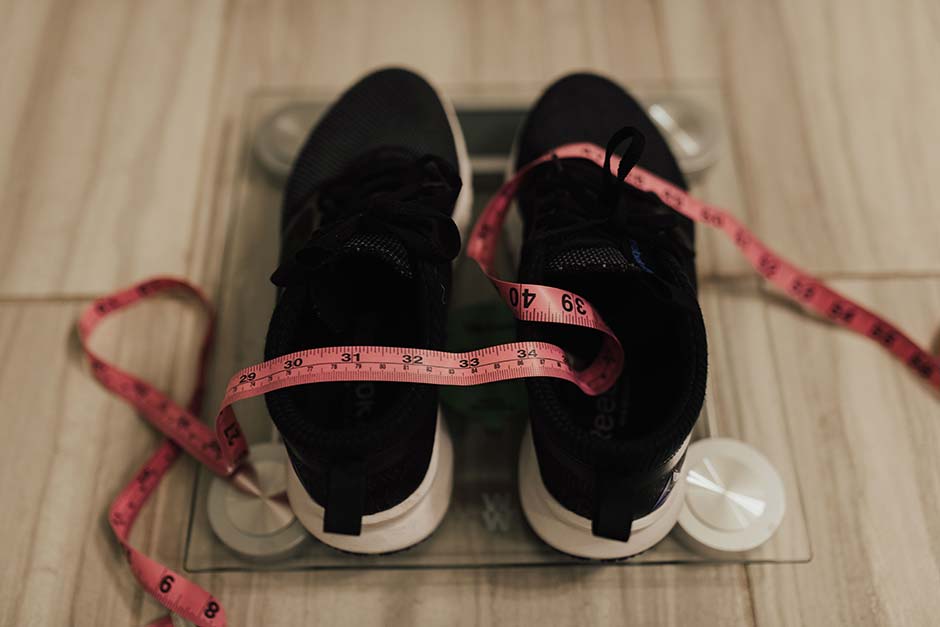
You’re going to notice it early in your nutrition coaching career… You’ll learn more about a client’s previous nutrition intake, do the math and think, “This 250-pound guy is only consuming 1,200 calories a day! How aren’t they losing body fat?”
If you’ve already read Part One of this series, you know the answer to that question. Losing fat requires a client to work with their body, not against it. If they’re going to place a full-on, all-angles assault on their body, you better believe their body will defend itself and fight back. Creating a large caloric deficit is one of the most common ways we see this happen as coaches.
The body’s greatest defense against the underconsumption of calories is to downregulate metabolism. In other words, metabolism usually comes to a screeching halt. On the contrary, if you and your client can work with their body as opposed to against it, they can safely and effectively get to a healthy body composition while eating more food, performing better, and ENJOYING life!
It’s now time to dive into the strategies that WAG coaches use to mitigate the common issue of undereating.
- At the foundation of every client-coach relationship is just that: a relationship! All relationships need an excellent foundation in clear, honest, and gentle communication. This is what separates the great macro technicians from the great macro coaches! Share what you’re thinking with them. Let them know that they’re undereating and that although it may seem counterintuitive, reaching their goals will happen faster if they’re loving and fueling their body instead of battling against it.
Detail out the math. I’ve gone as far as communicating to them every single calculation that I did in order to come up with their macro prescription. What’s their activity multiplier? What’s their deficit set at? What and why are their fat macros the way they are? Why did you choose a specific protein multiplier? If you can communicate your thought process with them, you’ll get a more comfortable and more compliant client. A more comfortable and more compliant client gets better results! - Hit them with the science! Take what you’ve learned in Part One and correlate it back to them! Estimate what their daily caloric consumption was based on their intake and highlight the contrast between that and their current macro prescription. Relate it back to specific things they said in their questionnaire. The big ones I see quite often are:
“I feel like I’m always hungry but I’m not losing weight.”
“My diet isn’t bad at all, I don’t get why I’m not making progress.”
“I get so hungry at night that I can’t stop myself from overeating.”
Go into the specifics and help them understand that the less they eat, the more their body will depress their metabolism. Let them know that losing weight is a delicate balancing act. It’s a give and take. It’s reducing energy intake enough to lose body fat but not so much that they overstress their body. - Predict the future. You’re a coach. You’ve done this a million times before. You know what’s going to happen and your client wants to know that you know what’s going to happen. Predicting the future will dramatically improve your client’s trust in you, and for good reason! You KNOW that there may be a temporary lull in progress as the body adjusts to more food. You know that it’ll be anywhere from a couple of days to a couple of weeks before the client sees fat loss. You know that the client may feel quite full for the time being!
If you communicate this to them and impart wisdom along the way, they will feel more comfortable with how things move and progress. If you’re correct in the way things play out, this just builds more trust. If you’re “wrong” about potential weight stagnation and the client starts losing weight right away, are they really going to be upset that your prediction was wrong? I don’t think so! Help them focus on other things like their training performance and how their energy feels! - Don’t forget about yourself. It can be quite nerve-wracking at first to see a client get a couple of weeks into their program and not see results. Be steadfast and firm. Your job as a coach is to have the client’s best interest in mind. Let them know that all of your choices are made deliberately, with their goals in mind. You’d never make a choice that went against their ultimate goal.
Your job is to get the client to work with their body even when they’re intent on battling it. For clients, particularly women, who have been undereating for a long time, I’ll wait up to a month before reducing macros. Pay attention to—and point out—other markers of progress like subjective feedback, measurements, and photos. Oftentimes, clients’ measurements will go down, their photos will look leaner and they’ll feel amazing before scale progress occurs!
You got into coaching because of a deep desire to leave the world a better place than you found it. Trust in your knowledge, trust in a history of success using these strategies, and trust yourself.
Advertisement
At the end of the day, as long as you get a client to work with their body and communicate clearly with them, you will have a long, successful career as a nutrition coach! Sure, you’ll get the occasional client who is resistant to this change, but utilize the above tips and watch your client-coach relationship improve as your client establishes a healthy relationship with food while reaching their body composition goals.
Get a WAG Coach
Working Against Gravity has led the macro tracking and health space for over a decade. Our team doesn’t just understand the science of nutrition—we’ve spent years mastering the art of tailoring it to fit your life. That means no cookie-cutter plans, just real strategies that have worked for over 30,000 people.
Choose from our membership options and start working with an expert 1-on-1 coach today.



